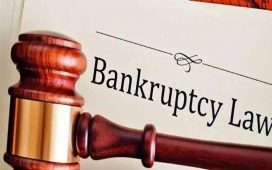Britain’s transition to a low-carbon future has reached a milestone with the closure of its last remaining coal-fired power plant at Ratcliffe-on-Soar in Nottinghamshire.
The shutdown of the 57-year-old power plant on Monday ends more than 140 years of coal power generation in the UK – an industrial story closely interwoven with Britain’s socioeconomic and political history.
Between the point when Britain’s first coal power plant began generating in 1882 until Ratcliffe’s closure, the UK’s coal plants burned through 4.6bn tonnes of coal and emitted 10.4bn tonnes of carbon dioxide, according to analysts at Carbon Brief, more than most countries have ever produced from all fossil fuel sources.
The end of an era has been welcomed by trade unions, green campaigners and politicians as an exemplar for how polluting industries can be wound down while safeguarding its labour force and communities. It also provides a chance to look back and reflect on the central role coal has played in powering modern Britain:
The coal revolution
Britain’s reliance on coal dates back to the Roman empire. The British Geological Survey believes the Romans may have begun mining in the Nettlebridge area of Somerset, England, close to the Fosse Way, to source coal used as fuel to heat baths and forge iron. But it was the Industrial Revolution when coal came into its own as a crucial driver of Britain’s emerging industrial might.
Demand for coal exploded in the 1700s thanks to a population boom. Initially, the nascent British mining industry struggled to keep up with demand, but the invention of the steam engine in 1712 unlocked the potential of Britain’s abundant reserves in the coalfields of central Scotland, south Wales, the Midlands and north-east England.
Coal-driven Newcomen engines pumped out the water that regularly flooded the mines, affording access to deeper and more plentiful reserves. In the early 1700s, about 3m tonnes of coal were mined every year – a number that exploded to more than 30m tonnes by the 1830s.
In the early 1800s, coal was used to make town gas for lighting and to fuel the expansion of Britain’s burgeoning railways. But it was only in 1882 that Britain opened the world’s first public coal-fired power station at London’s Holborn Viaduct. The plant, built by Thomas Edison’s Edison Electric Light Company, initially generated enough electricity for almost 1,000 street lights from Holborn Circus to St Martin’s Le Grand as well as private residences. Other small-scale coal power plants followed.
The fossil-fuel century
At the start of the 20th century almost 100% of Britain’s electricity was generated by coal plants. By 1950, its dominance remained largely unchallenged at 96%, and in the late 1960s and 1970s Britain’s state-owned Central Electricity Generating Board ushered in a new generation of super coal plants.
In 1966, Ferrybridge C began generating electricity on the River Aire in West Yorkshire. It opened with a generating capacity of 2,000 megawatts from four 500MW units, the first in Europe to create electricity from a generating unit of this size.
Within two years, coal plants of a similar size mushroomed up across Britain’s coalfields: Ratcliffe-on-Soar, Cottam and West Burton A all began generating power in Nottinghamshire; and the Eggborough power plant started operations in North Yorkshire.
By the end of the decade, the Ironbridge and Rugeley coal power plants began generating power in the West Midlands. In total, about 12 power stations of this scale began generating electricity in the years between 1966 and 1974, culminating in the giant Drax plant in North Yorkshire.
After a sharp slump during the 1984-1985 miners’ strike coal power failed to return to the highs recorded at the start of the decade. By the 1990s, Britain’s dash for gas power and rising environmental concerns spelled the beginning of a long existential decline for coal.
Powering past coal
The millennium began with coal accounting for 36% of the UK’s electricity; with newer gas power plants and nuclear reactors playing a larger role in the power system. Coal plants became increasingly expensive to run owing to regulations that called for costly upgrades to help reduce pollution.
By 2008, the UK government passed the Climate Change Act – mandating an 80% cut overall in six greenhouse gases including carbon dioxide emissions by 2050 – raising questions over the future of coal generation, which produces double the carbon emissions of newer gas power plants.
In 2013, a new tax designed to top up the cost of carbon emissions tipped the scales further in favour of gas. The tax was largely responsible for the shutdown of 10 of the UK’s largest coal power plants over the next decade.
In 2015, the government set out plans to end all coal-fired power generation entirely by 2025. In the same year, global governments met in Paris for the UN climate talks, leading to the 2016 Paris climate agreement to keep the rise in global surface temperature to well below 2C.
By 2020, coal power had dwindled to just 1.8% of the UK’s electricity mix, and in 2021 the government brought forward the ban to October 2024. The decision to hasten the end of Britain’s coal power era was announced just months before the UK hosted the Cop26 UN climate talks in Glasgow, where calls to phase out coal took centre stage.
The Ratcliffe plant had originally planned to shut in late 2022 but its owner, the German energy company Uniper, later said it would keep the plant running during the Europe-wide gas crisis triggered by Russia’s invasion of Ukraine under an agreement with the government.
Michael Shanks, the minister for energy, said the closure marked the end of an era, adding: “Coal workers can be rightly proud of their work powering our country for 140 years. We owe generations a debt of gratitude as a country.”











